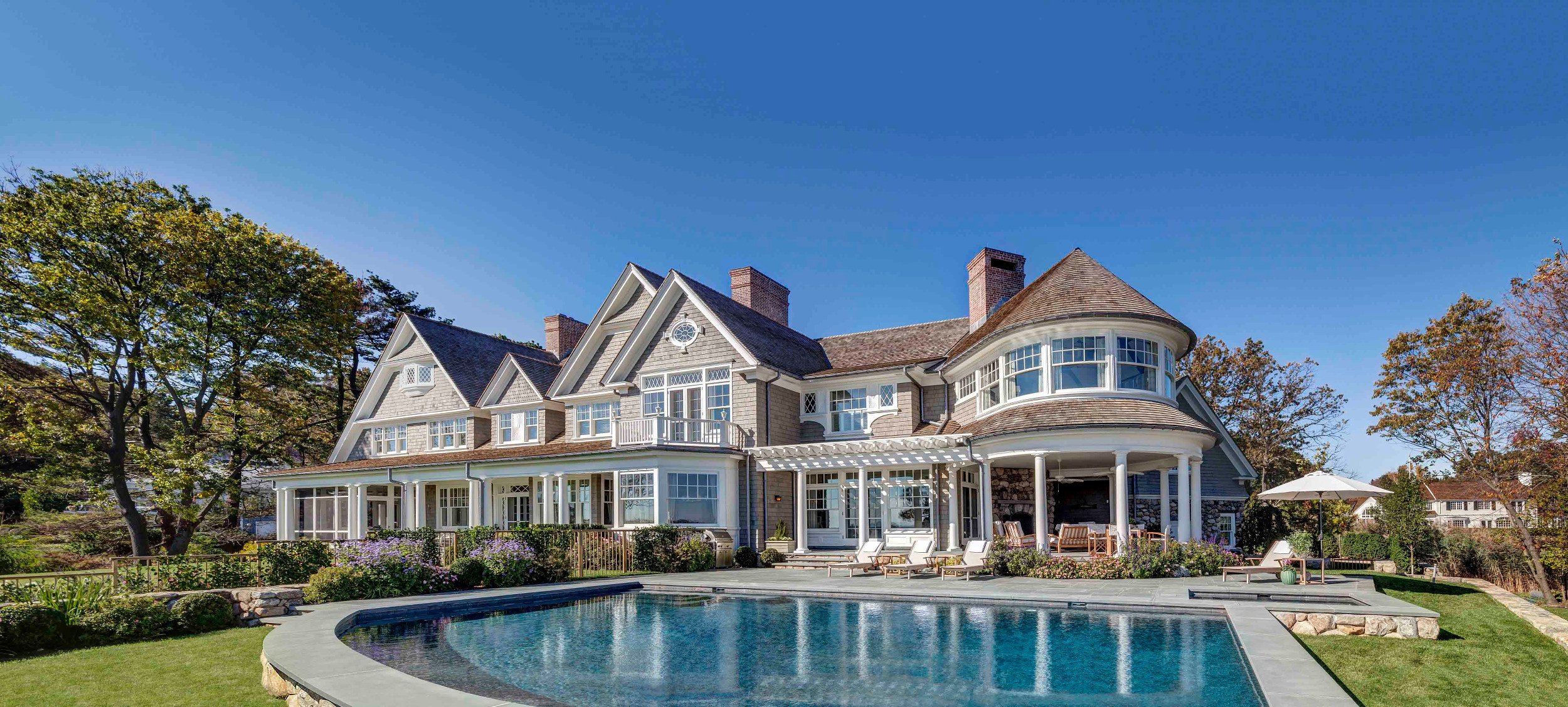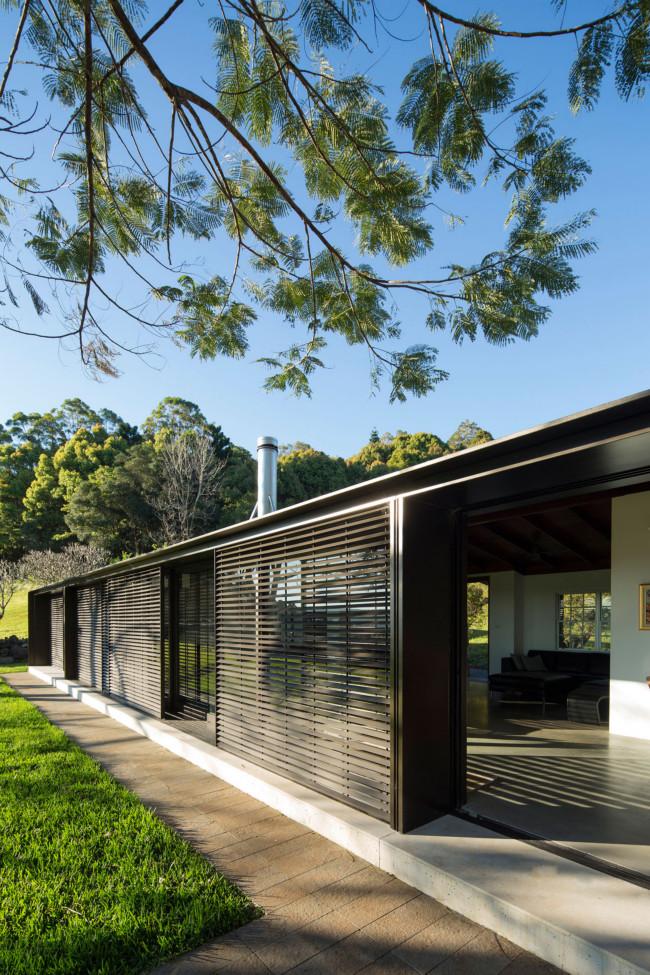Leading Trends in Residential Style You Should Understand About
As residential architecture proceeds to advance, several compelling patterns are forming the means we make and inhabit our space. Secret growths such as lasting structure practices, the integration of wise home innovation, and the surge of modular homes emphasize a significant change in the direction of both functionality and environmental responsibility. Additionally, ideas like open strategy living and biophilic layout are redefining our interaction with space and nature. Comprehending these patterns not just informs style options yet also reveals broader implications for lifestyle and neighborhood - residential house architect. What might these innovations mean for the future of domestic living?
Lasting Structure Practices
An enhancing number of household jobs are embracing lasting building techniques, driven by a growing recognition of environmental impact and power effectiveness. This change is defined by the integration of environmentally friendly products, energy-efficient designs, and cutting-edge building approaches. House owners and contractors are increasingly prioritizing using renewable energies, such as bamboo and recycled metals, which not only lower the carbon footprint yet also boost the sturdiness and visual allure of homes.
Integrating energy-efficient systems is another critical aspect of lasting structure - residential house architect. Features such as high-performance insulation, energy-efficient home windows, and photovoltaic panels are becoming requirement in brand-new household designs. These aspects not just add to reduced energy consumption yet also supply substantial lasting savings for property owners
Additionally, the format of lasting homes frequently highlights natural light and ventilation, minimizing the dependence on fabricated lights and environment control systems. Landscape design techniques, such as xeriscaping, more advertise sustainability by minimizing water usage.
As the demand for sustainable living services continues to rise, the domestic design market is positioned to introduce and adjust, guaranteeing that future homes are not only ecologically responsible but useful and additionally comfy for their passengers. - residential house architect
Smart Home Innovation
Smart home innovation is transforming the way homeowners interact with their space, boosting protection, ease, and power management. This cutting-edge technique integrates different devices and systems, permitting users to regulate their homes remotely or via automated processes. Central to this trend is using smart gadgets such as thermostats, lighting, safety cameras, and home appliances, all connected by means of the Internet of Things (IoT)
Among the most attractive attributes of smart home modern technology is the ability to personalize setups for ideal power efficiency. House owners can monitor energy usage and readjust air conditioning, heating, and lighting based upon their regimens, considerably minimizing utility prices. Moreover, advanced safety and security systems furnished with clever locks and surveillance video cameras supply tranquility of mind, making it possible for remote surveillance and informs to possible protection violations.
Combination with voice-activated aides boosts customer experience, permitting house owners to manage gadgets with easy voice commands. As technology continues to progress, the capacity for smart home systems to boost top quality of life expands, making them an essential factor to consider in modern-day property architecture. Eventually, smart home technology is not just a pattern but a basic change toward more intelligent living settings.
Open Idea Living
Open principle living has arised as a defining function in modern household design, characterized by the elimination of conventional obstacles between rooms. This style approach promotes fluidness and connectivity within the home, enabling for a seamless shift between areas such as the cooking area, eating, and living spaces. By removing walls and dividings, open concept designs develop a feeling of spaciousness, promoting a welcoming environment that boosts social interaction.

Furthermore, this technique to residential style aligns with minimalism, concentrating on useful simplicity and aesthetic comprehensibility. Homeowners appreciate the adaptability of these formats, which can be easily adjusted to mirror personal style with furnishings setup and decor. As open concept living remains to get grip, it remains a testament to advancing family members dynamics and the desire for homes that enhance connection and convenience.
Biophilic Style
Biophilic layout has ended up being significantly substantial in residential architecture, emphasizing the intrinsic connection between humans and nature. This design approach looks for to incorporate all-natural components right into living rooms, therefore cultivating a feeling of health and enhancing the quality of life for occupants. By incorporating features such as all-natural light, plant life, and natural products, biophilic style promotes a harmonious connection between indoor environments and the environment.
Crucial element of biophilic style include huge home windows that give unhampered sights of outside landscapes, living walls that introduce plant right into interiors, and open floor strategies that published here urge air flow and natural light infiltration. Water functions, both inside and outside the home, offer to produce relaxing environments and enhance sensory experiences.
Furthermore, the usage of lasting materials not just supports ecological stewardship but additionally adds to much healthier interior air quality. As awareness of ecological problems boosts, home owners are increasingly focusing on designs that show their connection to nature. Basically, biophilic design not only boosts visual charm but also addresses psychological and psychological needs, making it a vital trend in modern property try this site design.
Modular and Prefab Homes

Additionally, modular and prefab homes are designed with sustainability in mind. Numerous manufacturers utilize environmentally friendly products and energy-efficient systems, such as photovoltaic panels and progressed insulation strategies, adding to lowered power intake and reduced energy expenses for house owners. The adaptability of layout choices enables personalization, providing to varied functional requirements and visual choices.
As the need for budget-friendly housing continues to rise, modular and prefab homes present a viable solution, addressing both financial and ecological difficulties. Neighborhoods are increasingly recognizing the possibility of these frameworks, incorporating them right into country and metropolitan settings. Overall, the fad toward modular and prefab homes signifies a change towards more lasting, effective, and adaptable living settings, making them an essential aspect of modern domestic architecture.
Final Thought
Sustainable building practices and smart home innovations improve performance and ease, while open concept living and biophilic design foster social interaction and a connection to nature. The rise of modular and prefab homes provides adjustable and affordable solutions, reflecting a Resources broader shift in the direction of functional and liable living.
Trick growths such as lasting structure techniques, the assimilation of clever home modern technology, and the surge of modular homes emphasize a substantial change in the direction of both performance and ecological obligation.The rise of modular and prefab homes has actually changed the property design landscape, using ingenious services for effective and sustainable living.Additionally, modular and prefab homes are made with sustainability in mind. Generally, the trend toward prefab and modular homes indicates a shift towards extra lasting, efficient, and adaptable living environments, making them a crucial element of contemporary household architecture.
Lasting building methods and clever home technologies boost performance and convenience, while open principle living and biophilic style foster social interaction and a link to nature.